This Halloween, turn off the lights and prepare for a scare from some movies you’ve probably never seen.
Monsters in the Closet
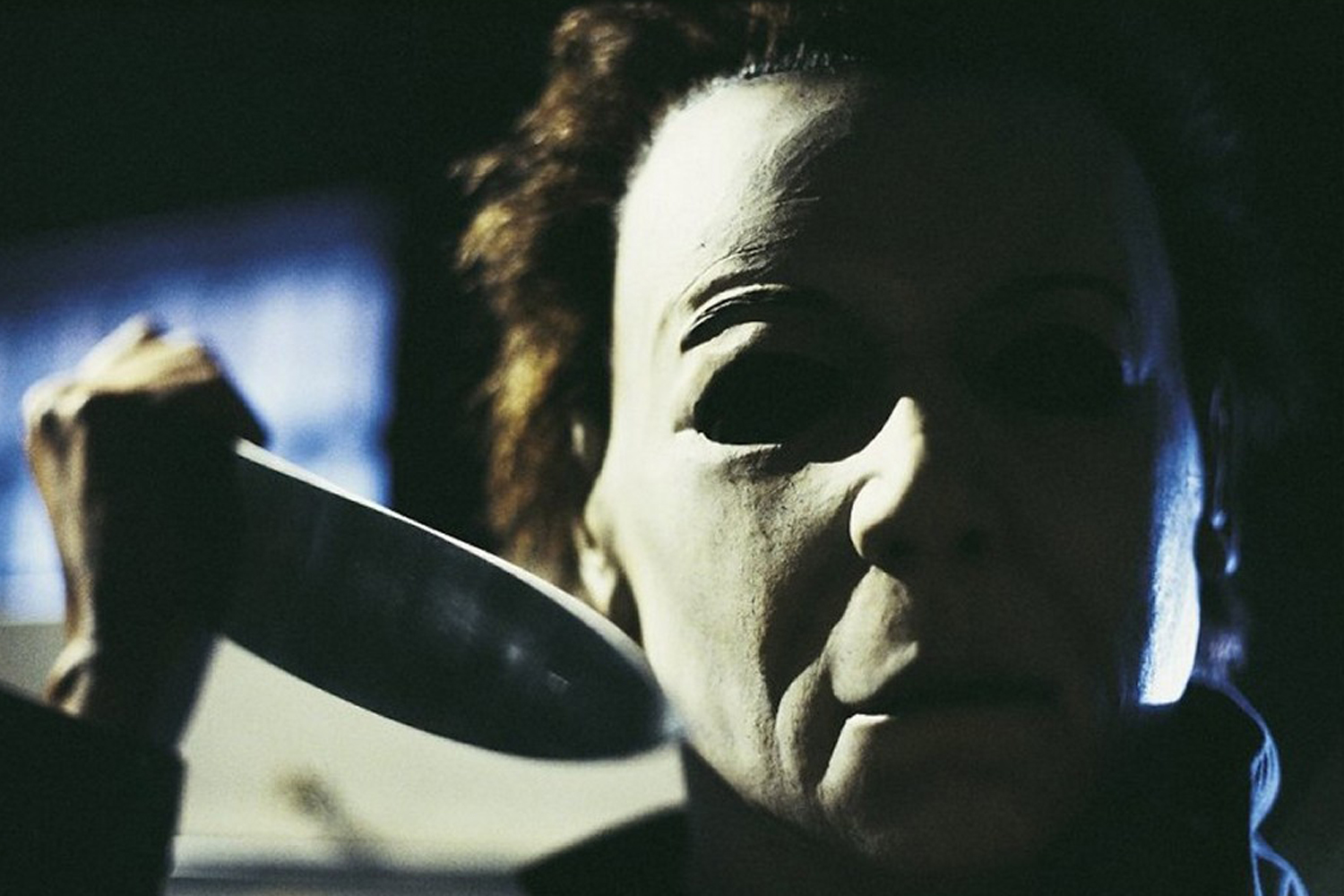
Looking for frightening fare to watch on Halloween night? We thought about writing a list of the most terrifying movies ever made, but you certainly don’t need the august cultural mandarins at TIME to tell you that the likes of The Exorcist and The Silence of the Lambs and John Carpenter’s Halloween (pictured) are three of the scariest movies of all time. But if you’re looking for a scary movie (or two, or 10) that you may not have seen before, look no further.
Several of these are from overseas, from countries that have older, deeper traditions of folk storytelling and monster legends than we Americans do. So it figures that they might know what they’re doing in the horror film department. And one is silent, so they probably didn’t show it on Saturday afternoon TV too often. Here, then, are 10 of the scariest movies you haven’t seen.
The Vanishing
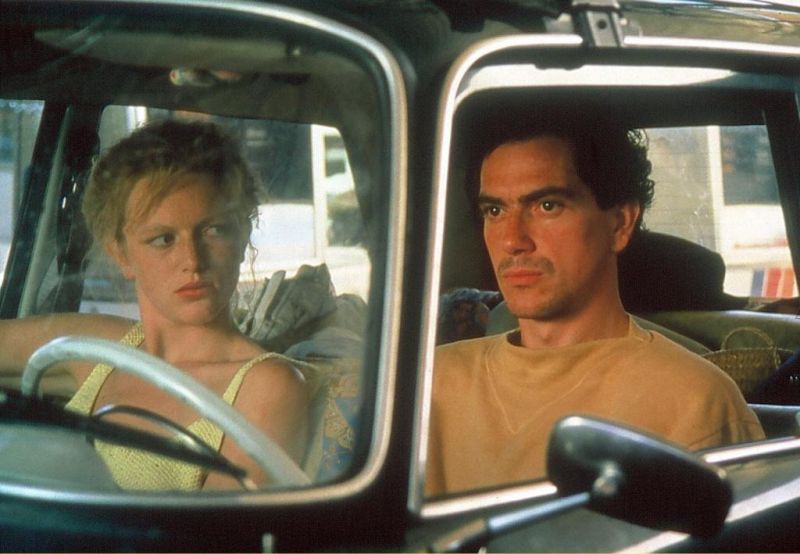
This Dutch-French co-production tells a story that Edgar Allan Poe, with his fondness for claustrophobic tales set in confined spaces, would have loved. During a vacation, Rex (Gene Bervoets) is looking away for only a moment when his girlfriend Saskia disappears at a gas statiom. (Johanna ter Steege is on screen only fleetingly, but she’s lovely enough to haunt the rest of the film.)
He spends years looking for her, without any luck, until he starts getting letters from her abductor, Raymond (Bernard-Pierre Donnadieu), a banal, ordinary middle-class guy, who toys with the obsessive Rex and his need to know what ultimately become of the woman. Finally, Rex agrees to let Raymond show him, not tell him, what happened to her. The result is dramatically satisfying and thoroughly disturbing, in a way that will give you nightmares for a week.
Director George Sluizer strings along sequences of everyday events with suspense and tension worthy of Hitchcock, and Donnadieu makes his villain all the more creepy for his mundane normalcy. Warning: Avoid the American remake, which, even though it’s also directed by Sluizer, is a horrible betrayal of his original, right down to its softened ending.
The Orphanage
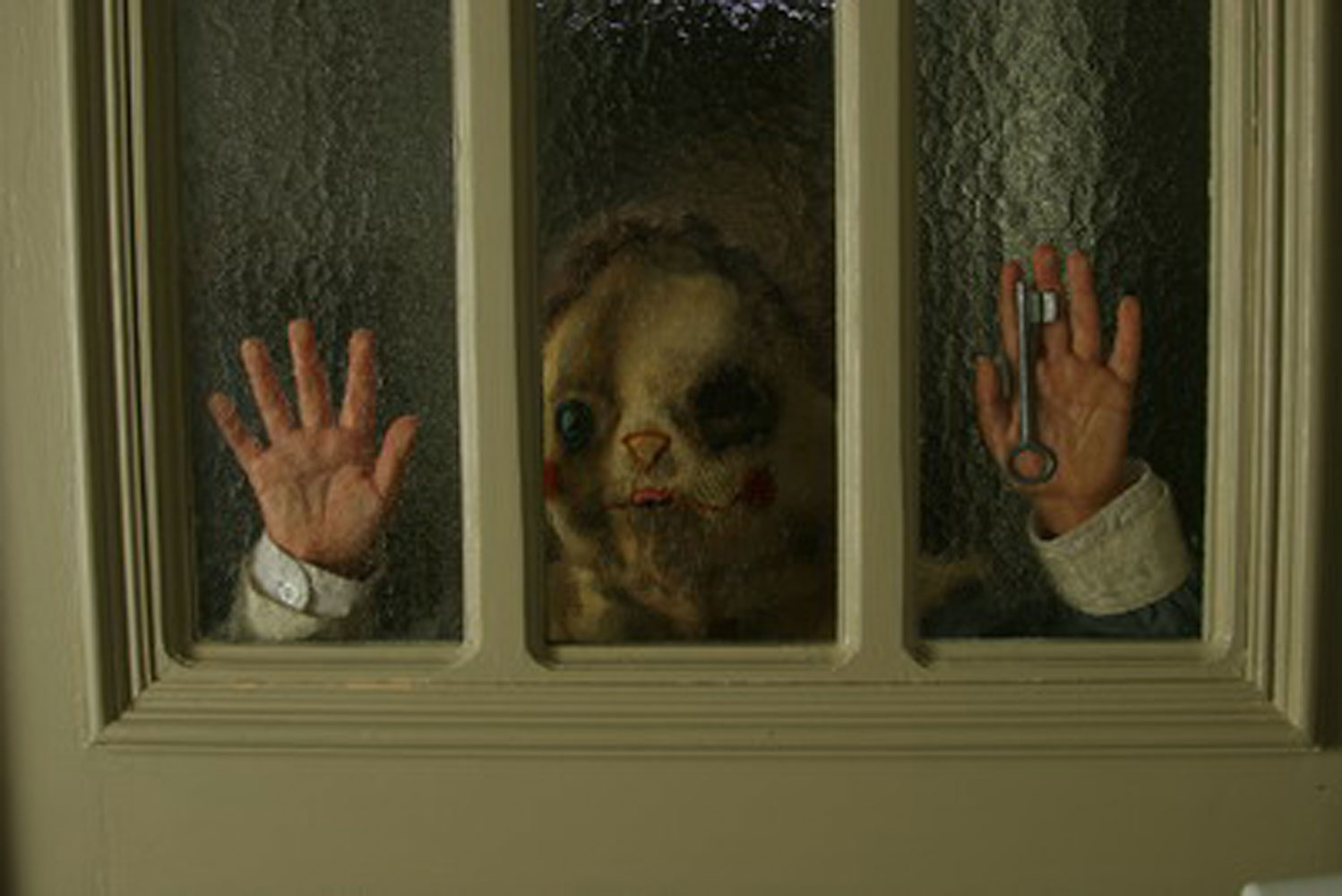
Years ago, before he was pitting giant robots against massive monsters in Pacific Rim, Guillermo del Toro made small, spare, even elegant horror movies. He didn’t direct this one (it was written by Sergio G. Sanchez and directed by Juan Antonio Bayona, who went on to collaborate on last year’s tsunami epic The Impossible), but he oversaw it as a producer, and it certainly bears his stamp.
The building of the title is where Laura (Belen Rueda) grew up, and she returns as the mother of an adopted son to revive the old building as an orphanage for disabled children. On the abandoned grounds, her adopted son Simon claims he has met a new friend, a boy named Tomas who wears a sack over his head. When Simon disappears, Laura and her husband Carlos begin to wonder if Tomas is real. The pragmatic Carlos seeks scientific answers, but the empathetic Laura turns to a medium (Geraldine Chaplin) to solve the mystery.
The story, complete with its creaky, bumps-in-the-night house and sinister-nanny type, may seem familiar, but Sanchez and Bayona effectively build an aura of dread so that the shocks, when they do come, are real jump-out-of-your-seat moments. Rueda (The Sea Inside) holds the film together as a mother who will go to any length to prove her love for her child. In many del Toro movies, there are haunted, ghostly children who pay for the sins of their elders, but here’s one where the elder is willing to sacrifice everything to redeem her son, which gives the movie a heart-rending quality throughout.
Inside
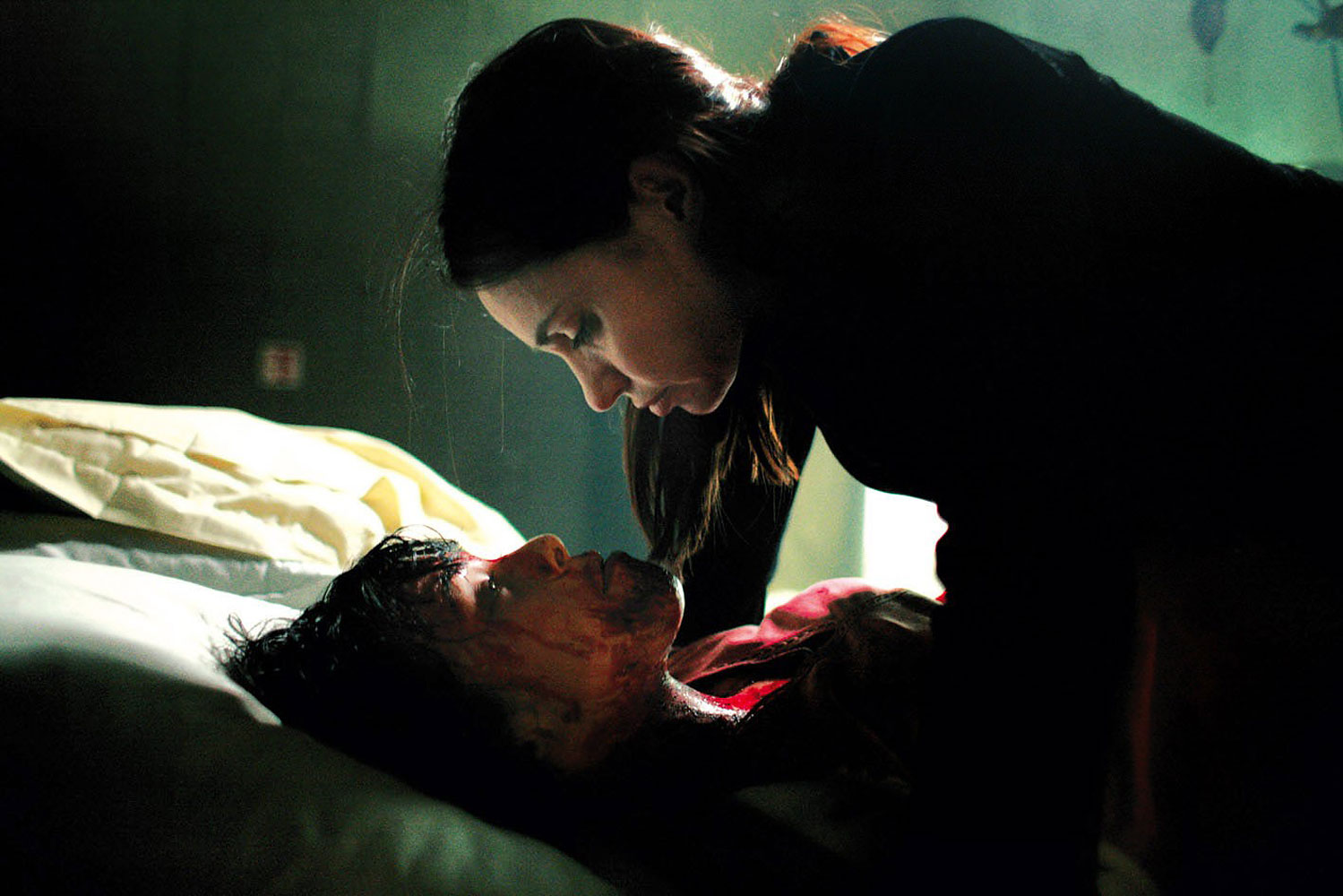
Writing/directing team Alexandre Bustillo and Julien Maury made their filmmaking debut with this French feature that reaches for new extremes in violence and gore. Sarah (Alysson Paradis) is an expectant mother who has survived the car crash that killed her husband. Months later, with the child about to be born, she’s home alone one night when she’s stalked by a nameless intruder (Beatrice Dalle, famous for going gothically nuts in the erotic drama Betty Blue) who, it becomes clear, wants to steal away the baby. What’s more, she’ll stop at nothing to get her way, as several ill-fated police officers discover when called to the house.
As Sarah tries to defend herself, bodies pile up, and quarts liters of blood are spilled. The shocks keep coming, and people keep getting killed by assailants who beat first and ask questions later. The result is profoundly disturbing and not at all for the squeamish.
Session 9
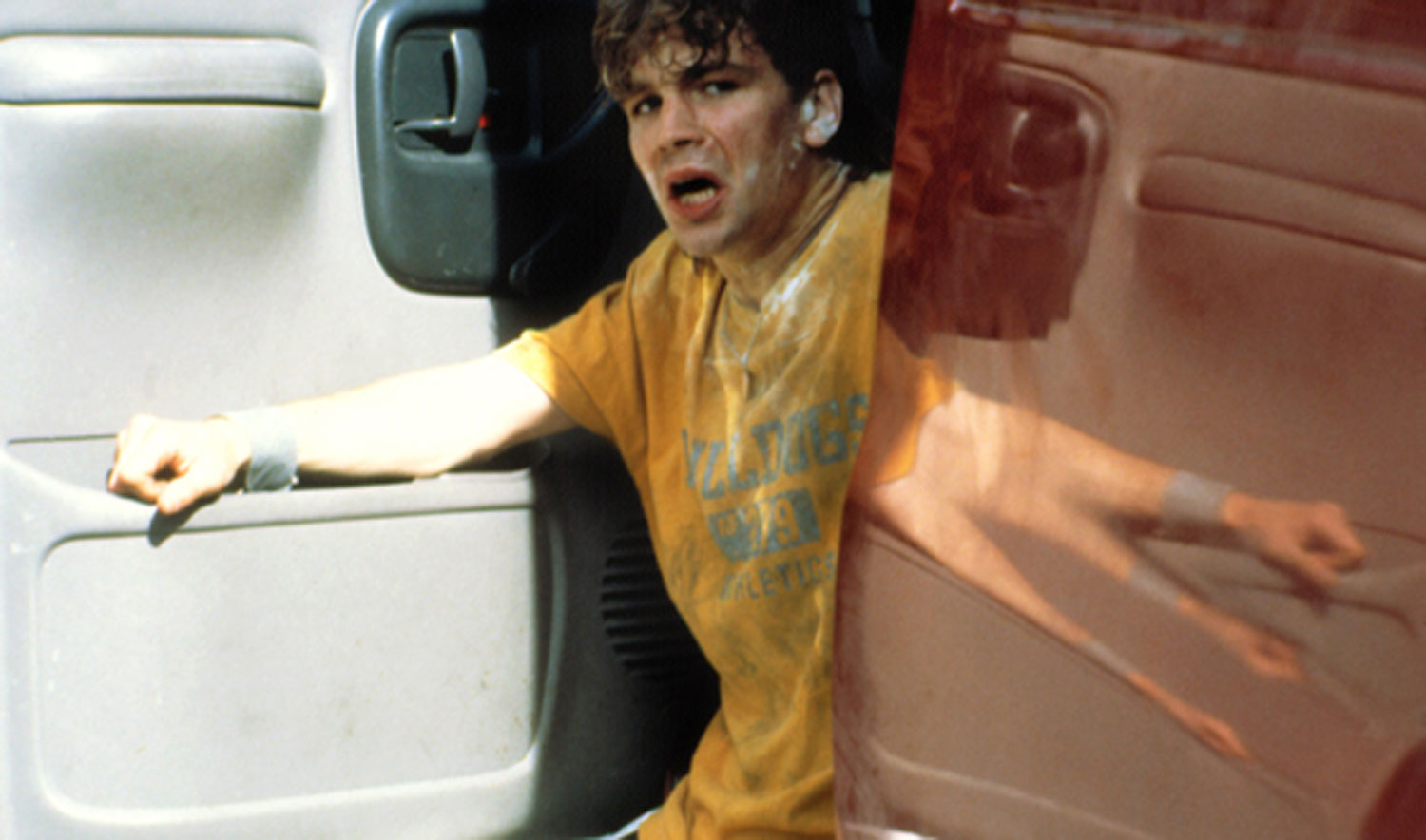
Brad Anderson became a horror-fan favorite when he directed this creepy tale set in an abandoned mental asylum. The setting (a real-life mental hospital in Danvers, Mass.) does most of the work here, though there are also effective performances by Peter Mullan, Josh Lucas, and (of all people) a pre-CSI: Miami David Caruso.
They play members of an asbestos-cleanup crew who, while working to make the building usable once again, discover a stash of rare coins, some dangerous-looking surgical instruments, and a series of recordings of psychiatric sessions with a patient with multiple personalities. One of the men disappears mysteriously, and it soon becomes clear that there’s a psychotic presence in the building. Like Kubrick’s The Shining, the horror here is largely environmental and psychological, with an air of looming dread building throughout, before all hell breaks loose.
[REC]

The found-footage subgenre of horror films, from The Blair Witch Project to the Paranormal Activity series, has become fairly rote in a short time, but this Spanish entry still brings something new to the table. Ostensibly filmed by a reality TV crew that covers the graveyard shift at a firehouse, the film follows the firemen as they answer a distress call at an old woman’s apartment. And then, the old woman sinks her teeth into an emergency worker’s neck, and suddenly, it’s zombie apocalypse time.
Writing/directing team Jaume Balaguero and Paco Plaza effectively convey a sense of what it would be like at ground zero of the zombie apocalypse. They’ve made two sequels so far (a third is on the way), and there’s been an American remake (Quarantine), but this first installment, where no one knows yet what’s going on, is the scariest.
The Creeping Flesh
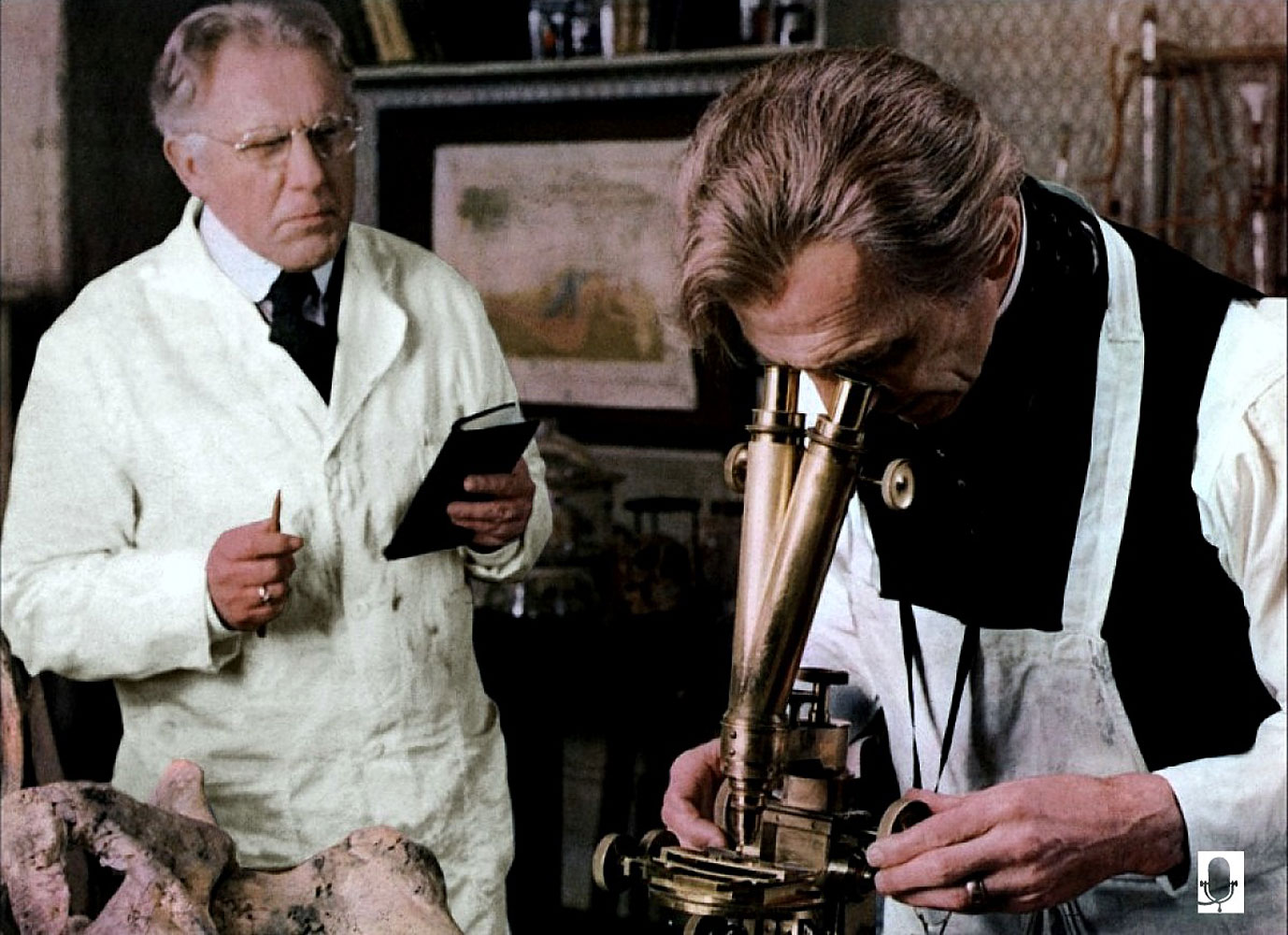
Christopher Lee and Peter Cushing made countless horror films together (many for the Hammer studio) about Dracula or Frankenstein, but here’s an unsung original tale that’s just as horrifying. Set in Victorian London, it’s a Frankenstein variation in which a scientist reanimates just a finger, with understandably disastrous results. Cushing brings back a whole prehistoric hominid skeleton from his travels to New Guinea. Exploring his theory that evil is a disease akin to mental illness, against which he might develop a serum, Cushing washes the skeleton’s finger in water, and flesh grows upon it as the finger comes alive. In the finger, he finds black cells that he believes to be the source of evil.
Lee plays Cushing’s brother, a fellow scientist who runs an asylum, and whose research is on the hereditary nature of insanity. Their interests come together in the form of Cushing’s daughter, Penelope, who is beginning to show signs of the suicidal madness that killed her mother. Cushing injects her with the experimental vaccine, but of course, there are some horrific side effects. When Lee learns of the skeleton and its role in the experiment, he plots to steal it — during a rainstorm.
If you want, you can read the whole thing as a satire, on Victorian sexual repression, outdated science, and imperialism, but it’s easier just to sit back and scream at the elegant creepiness of Cushing and Lee or the awful spectacle of that wriggling finger.
Dog Soldiers

British writer/director Neil Marshall, the inventive and baroque horror filmmaker who’d go on to shoot The Descent and Doomsday, made his directing debut with this gruesome shocker. British soldiers are doing drills in the Scottish countryside when they’re attacked by an unexpected menace: a pack of werewolves. The survivors retreat to a farmhouse with a lone woman, zoologist and professed werewolf expert Megan (Emma Cleasby), but the lycanthropes have more than a few surprises in store for them on this full-moon night.
Sean Pertwee is a grizzled vet, while Kevin McKidd (Trainspotting, Grey’s Anatomy) plays the soldier who has the most to prove. They’re the standouts in a group of reasonably well-rounded characters, about whom you’ll come to care before they’re turned into wolf chow. Marshall peppers the film with unusual wit, from references to Evil Dead to that scene with Pertwee and a hungry dog (you’ll know it when you see it) — little touches that help elevate Dog Soldiers above your average werewolf movie.
Re-Animator
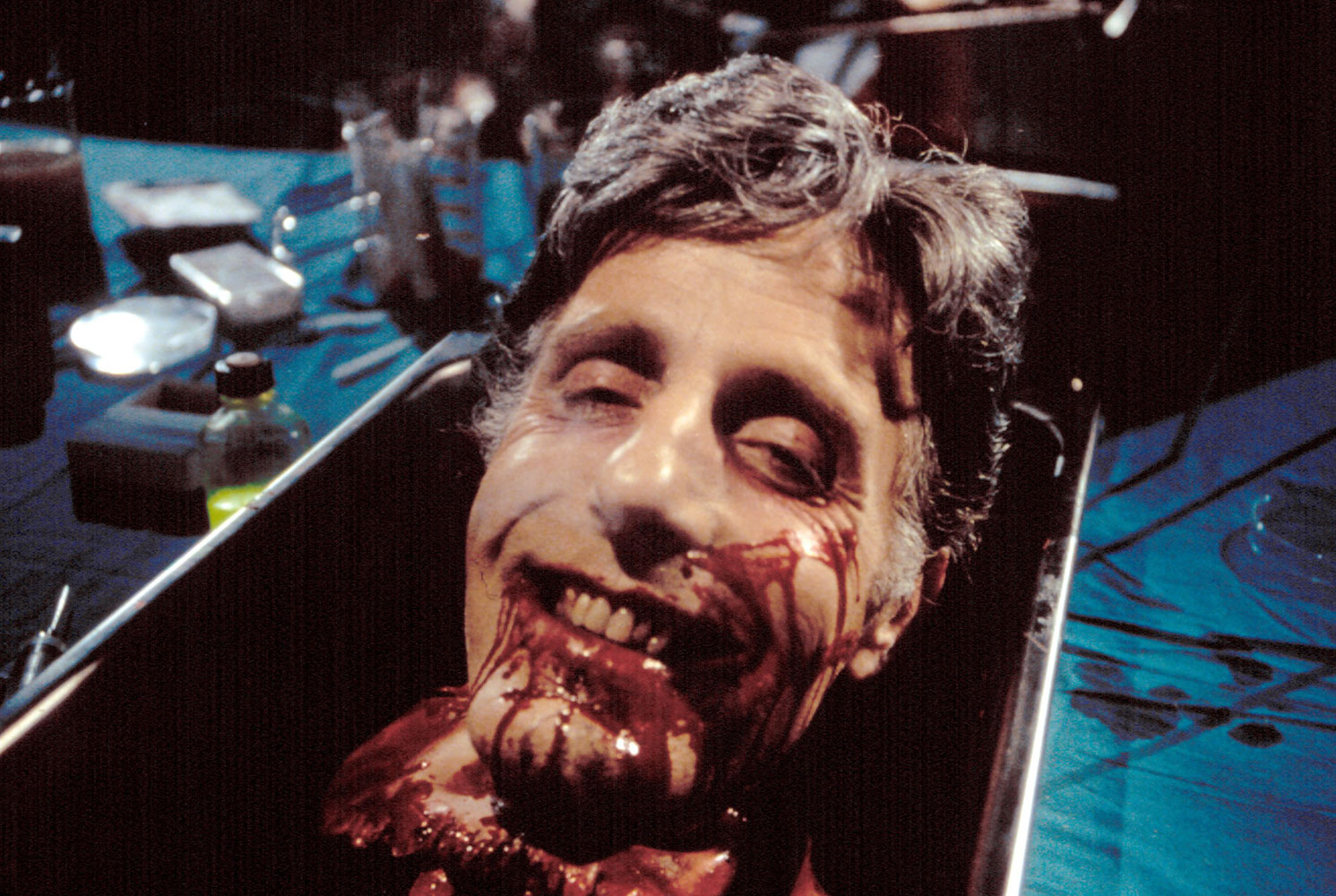
Stuart Gordon put himself on the horror map with this H.P. Lovecraft adaptation. Dr. Herbert West (troll-like Jeffrey Combs) is the would-be Victor Frankenstein here who develops a glowing green serum that can bring dead tissue back to life. Unfortunately, it’s just as effective on severed limbs as it is on whole bodies. So when his rival, Dr. Hill (David Gale) goes mad with power, he proves awfully hard to stop, even after West beheads him. Oh, also, he’s horny, which leads to a filthy visual pun in which his chopped-off noggin violates poor, shackled Barbara Crampton (a scream queen who should have had a Jamie Lee Curtis-like career).
Yes, there are some tongue-in-cheek moments, but most of the film is straight-up shocks, from revived pets to an army of zombies. The effects are gory and over-the-top, but Combs manages to keep things grounded with an intense performance that goes for deadly earnestness over camp. Gordon made two more Re-Animator sequels, and there was even a Broadway musical, but this is still the one to turn to for fun and screams.
The Evil Dead
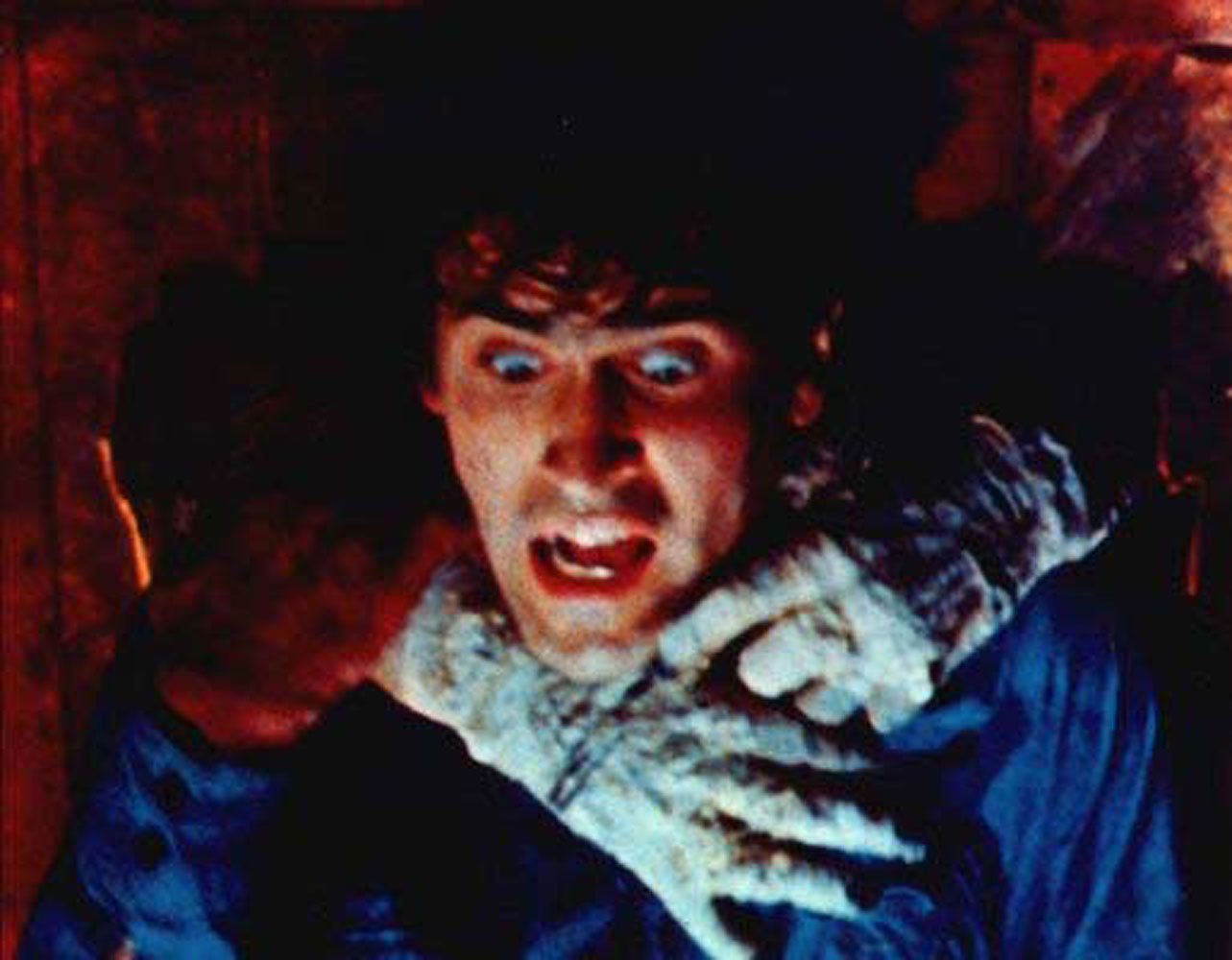
Long before he was the big-budget studio director behind Spider-Man and Oz, The Great and Powerful Sam Raimi was a film student who made this shoestring-budget horror film that turned out to be the ultimate cabin-in-the-woods chiller. (Other rookies who worked on it: future Oscar-winning director Joel Coen and B-movie actor par excellence Bruce Campbell.)
Full of innovative effects born of cheapness and desperation (most notably, the demon-cam that was just a regular camera mounted on a two-by-four, carried by two guys running through the forest), Evil Dead wrings maximum horror from its relentlessly paced narrative, which has five vacationing college kids reading a cursed book and unwittingly letting loose soul-swallowing demons, rapist trees, and gallons upon gallons of blood.
Raimi followed it up with a near-identical, slightly more tongue-in-cheek sequel (Evil Dead II: Dead by Dawn), then a third movie (Army of Darkness) that sent protagonist Ash (Campbell) to fight “deadites” in the Middle Ages. (Plus, there was this year’s Raimi-approved reboot.) But the first remains the most inventive and most terrifying, serving up scares with diabolical verve.
Nosferatu
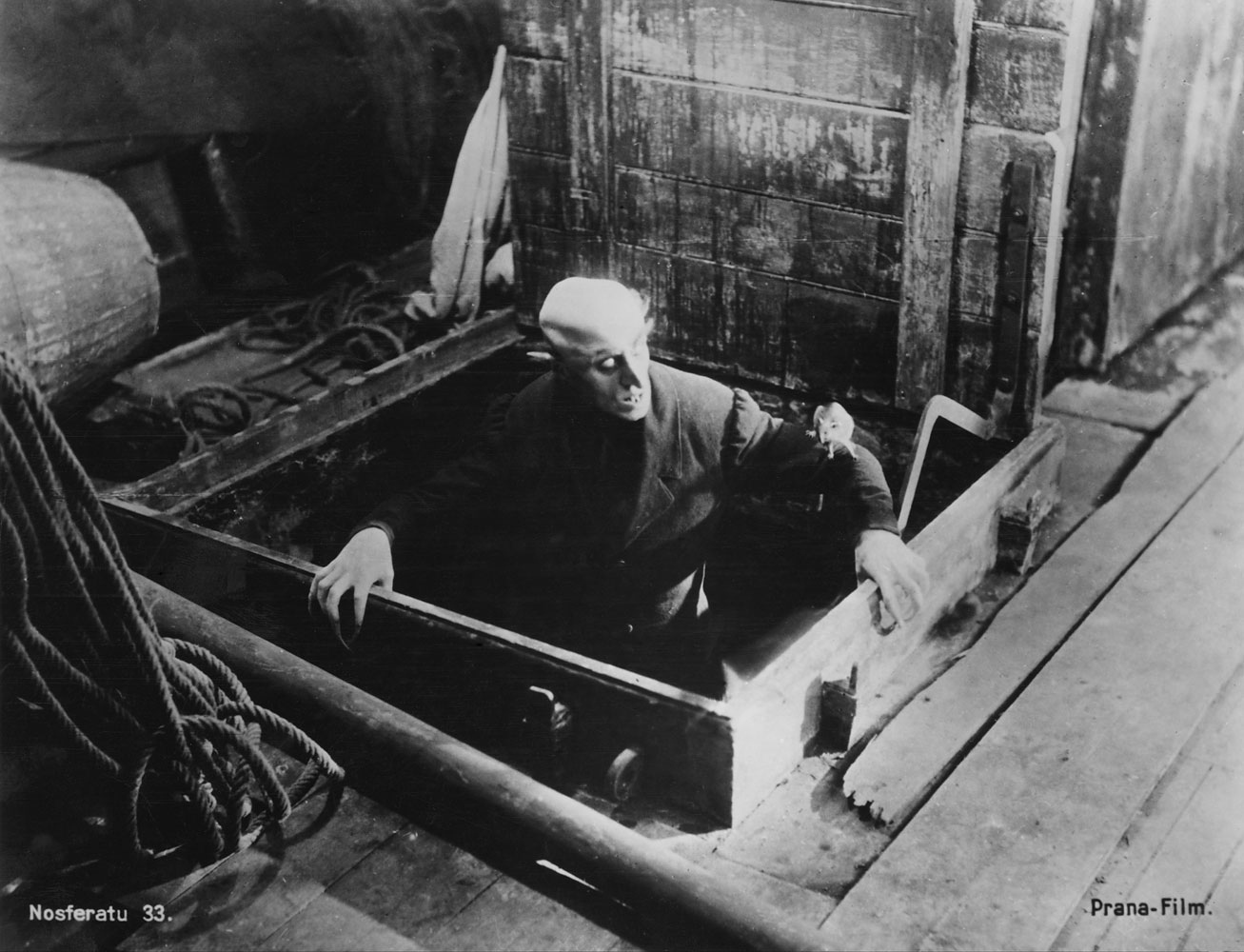
The first major adaptation of Bram Stoker’s Dracula to film was F.W. Murnau’s German expressionist classic. Yes it’s silent, but you can practically hear screaming every time Max Schreck shows up as Count Orlok. (The character names were changed to protect Murnau from a copyright lawsuit.) With his bald head and long pointy fingernails, he looks like a hungry rodent, not the debonair, courtly nobleman we’ve come to know from the Bela Lugosi and Gary Oldman performances.
Not much is known about Schreck, but he’s a truly unnerving presence, one whose impact is still felt to this day. Christopher Walken’s villain in Batman Returns shares his name. His last name, which is German for “fright,” proved a good name for a certain green cartoon ogre. And he even inspired a horror flick of his own, 2000’s Shadow of the Vampire, in which it’s speculated that the reason Max Schreck (played by Willem Dafoe) was so convincing in Nosferatu was that he was an actual vampire. It’s as good an explanation as any.
More Must-Reads From TIME
- The 100 Most Influential People of 2024
- The Revolution of Yulia Navalnaya
- 6 Compliments That Land Every Time
- What's the Deal With the Bitcoin Halving?
- If You're Dating Right Now , You're Brave: Column
- The AI That Could Heal a Divided Internet
- Fallout Is a Brilliant Model for the Future of Video Game Adaptations
- Want Weekly Recs on What to Watch, Read, and More? Sign Up for Worth Your Time
Contact us at letters@time.com